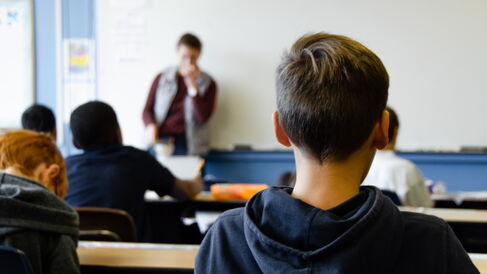
The Michaelmas term is in full swing at the University of Cambridge and the VRC has a fresh batch of papers in publication - most are open access so free to read for everyone.
Authority figures and social support in childhood and adolescence
- Nivette, A., Obsuth, I., Ribeaud, D., Eisner, M. Fair Teachers, Fair Police? Assessing the Pathways between Perceptions of Teacher and Police Authority in Childhood and Adolescence. J Youth Adolescence (2021). https://doi.org/10.1007/s10964-021-01537-6 - Open Access. Abstract: Existing research has shown that the quality of the relationship between teacher and child is associated with more positive perceptions of school authorities. There has been relatively less attention to the processes that connect attitudes towards different sources of authority, such as between teachers and police. The current study uses a counterfactual approach to estimate the direct and indirect effects of teacher–child relationships on children’s later perceptions of police legitimacy. [...]
- Meaghen Quinlan-Davidson, Ligia Kiss, Delan Devakumar, Mario Cortina-Borja, Manuel Eisner, Maria Fernanda Tourinho Peres. The role of social support in reducing the impact of violence on adolescents’ mental health in São Paulo, Brazil, 2021, Plos One - Open Access. Abstract: Objectives - We investigated whether perceived social support among adolescent students moderated the association between violence exposure and internalising symptoms in São Paulo city, Brazil. Methods - We tested the stress-buffering model using data from the cross-sectional school-based, survey São Paulo Project on the Social Development of Children and Adolescents. Internalising symptoms were measured using an adapted version of the Social Behaviour Questionnaire; serious victimisation, being bullied once/week, school violence and community violence, friend and teacher support were scales adapted by the research team; the Alabama Parenting Questionnaire measured parenting style. [...]
Health risks in childhood and adolescence
- Lilly Shanahan, Annekatrin Steinhoff, Laura Bechtiger, William E. Copeland, Denis Ribeaud, Manuel Eisner, Boris B. Quednow. Frequent teenage cannabis use: Prevalence across adolescence and associations with young adult psychopathology and functional well-being in an urban cohort, Drug and Alcohol Dependence, Volume 228, 2021, https://doi.org/10.1016/j.drugalcdep.2021.109063. Abstract: Background - Amidst cannabis legalization efforts and laws, we do not fully understand how the youngest frequent cannabis users fare during young adulthood. This study aims to 1) examine the prevalence of cannabis use during adolescence, and 2) investigate links of frequent (i.e., weekly or daily) teenage cannabis use with psychopathology and functional well-being at age 20—compared to no or occasional use. Methods - Data came from a prospective-longitudinal cohort study (assessments from 2004 to 2018, from ages 7–20) in an urban setting (N = 1482). Substance use was assessed with self-reports between ages 13 and 20. [...]
- Astolfi, R.C., Leite, M.A., Papa, C.H.G. [...] Manuel Eisner et al. Association between self-control and health risk behaviors: a cross-sectional study with 9th grade adolescents in São Paulo. BMC Public Health 21, 1706 (2021). https://doi.org/10.1186/s12889-021-11718-4. Open Access. Abstract: Background - Self-control (SC) has been consistently found associated with diverse health risk behaviors (HRBs), but little research refers to low- and middle-income countries. Furthermore, there is evidence that some HRBs tend to aggregate, however studies with the specific purpose of addressing the relation between SC and multiple health risk behaviors (MHRBs) are rare. The objective of this study is to analyze these associations and provide evidence to help filling these gaps. Methods - A sample of 2106 9th grade students from the city of São Paulo responded a self-administered questionnaire in 2017. We tested the association of SC measured as an ordinal variable with four levels (higher, high, medium and low) with six HRBs (binge drinking, marijuana use, smoking, high consumption of ultra-processed food, sedentary behavior and bullying perpetration), in both separated and aggregated forms (MHRBs), controlling for potential confounders. Binary logistic regression was used to test the association between exposure (SC) and single outcomes. In order to analyze the association of SC with MHRBs, multinomial logistic regression was employed. [...] Find more papers for this project on the sp-proso page.
